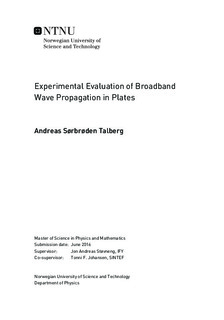Experimental Evaluation of Broadband Wave Propagation in Plates
Master thesis
Permanent lenke
http://hdl.handle.net/11250/2400143Utgivelsesdato
2016Metadata
Vis full innførselSamlinger
- Institutt for fysikk [2677]
Sammendrag
As the number of aging oil field in the North Sea is increasing, the number of plug and abandonment (P&A) jobs which has to be conducted on the wells going out of production, e.g. to prevent hydrocarbons from leaking out of the reservoirs, are increasing with it. In the planning of a P&A job, the bonding and hydraulic isolation properties of the sealing material in a cased well must be logged. In this thesis some of the ultrasonic evaluation tools currently used to ensure that a well cementing job has been properly executed will be presented together with two of the widely used techniques in ultrasonic logging, in particular the pulse-echo technique and the pitch-catch technique. Even though the ultrasonic pitch-catch technique is widely used in well logging and is commercially available, little research has been done on the use of this technique in an environment with multiple casings.
A finite-element simulation model were constructed for a double-casing environment, and a set of ultrasonic measurements were performed to give an experimental verification to the simulation model. The simulations were conducted using COMSOL Multiphysics and the ultrasonic experiments in this thesis were conducted on the Statoil-funded Behind Casing Logging Set-Up (BeCaLoS) developed by SINTEF Petroleum Research, designed to replicate the steel casing setup in an oil well.
It was found from the simulations that a train of leaky Lamb wave packets is excited on both casings in the double-casing environment. Through the ultrasonic experiments the excitation of the Lamb wave packet trains on the plate was experimentally verified. Three sets of pitch-catch measurements were conducted by moving the receiver in a grid parallel to the plate to measure the Lamb wave spreading in the plate, each with a different setup for the lower plate. The tilting of the lower plate in the experimental setup, replicating the situation of casing eccentering, could be detected through these sets of pitch-catch measurements.
